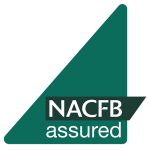10 things you need to know about MCD
With the Mortgage Credit Directive (MCD) in all of the secured loan sector’s minds and with plans being formulated by lenders and brokers, there are many things we all need to be aware of. Some apply more to lenders, some to brokers and some that customers will have to be aware of as they start to apply for loans under the new regulatory regime. So, we’ve put together a list of ten of the key points in an easy to understand guide.
- Disclosure Requirements
These will be the same as for mortgages. Second charge mortgages, which currently fall under the interim consumer credit regime, will be regulated under MCOB. From March 2016, new loans will need to comply with the same pre-sales disclosure and assessments as first charge mortgagees
- Improved Sales Process
Will bring second charges in line with customers’ first charge mortgage. This will mean a full disclosure interview and looking at ability to pay over the term of the loan and suitability for this type of finance. Early payment of a loan will also become a product feature but lenders may have conditions on this.
- Affordability Assessment
As with mortgage applications, secured loans will have the same requirements for brokers and lenders to assess client affordability, now and in the future, even if interest rates rise. The new ESIS (see below) will also need to show potential payments should interest rates rise to a 20 year high.
- Payment Difficulties
A documented process for dealing with customers who find it difficult to pay their loan during the term will need to be implemented, as they are for mortgages. These will include staff training for the detection and handling of potential difficulties by engaging with customers.
- Financial Advertising
The MCD strengthens current MCOB requirements for financial promotions. As well as being clear and fair, firms need to ensure that product features are explained and are not misleading
- ESIS
One of the big changes will be the introduction of a new information sheet that will replace the KFI – the European Standardised Information Sheet or ESIS for short. This will need to be provided to the customer alongside any recommendation made. It will include examples of repayments if rates change as well as the ‘APRC’ (annual percentage rate of change).
- Day Reflection
There’ll be a new period of ‘reflection’ for customers of at least seven days to consider the Binding Offer from the lender. This will replace the current 16 day cooling off period.
- Binding Offer
Conditional offers will still be allowed to be made to consumers, but ultimately a lender will need to produce a binding offer. This then triggers the ‘reflection period’ of at least seven days. This will be a major change for the secured loans market and administration systems and processes will need to be updated.
- Conduct, Knowledge and Competency
Credit intermediaries’ and appointed representatives’ staff will need to establish minimum knowledge and competency requirements. These are extensive and are not limited to knowledge of the products but also include an understanding of the market, the sales process, valuations, the land registration, and business ethics.
- Consumer Protection
The new legislation aims to harmonise first and second charge lending processes and procedures, so affording consumers the same protection for mortgages or loans secured on their property. Through lender and intermediary knowledge and competency provided for through the regulatory framework, it aims to minimise irresponsible lending.
Keep an eye out for more updates and information on regulation and impacts and considerations.


